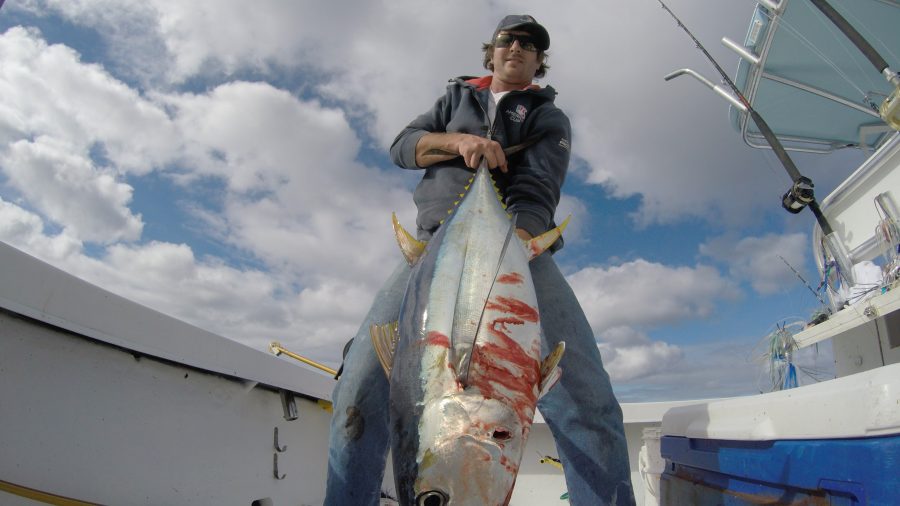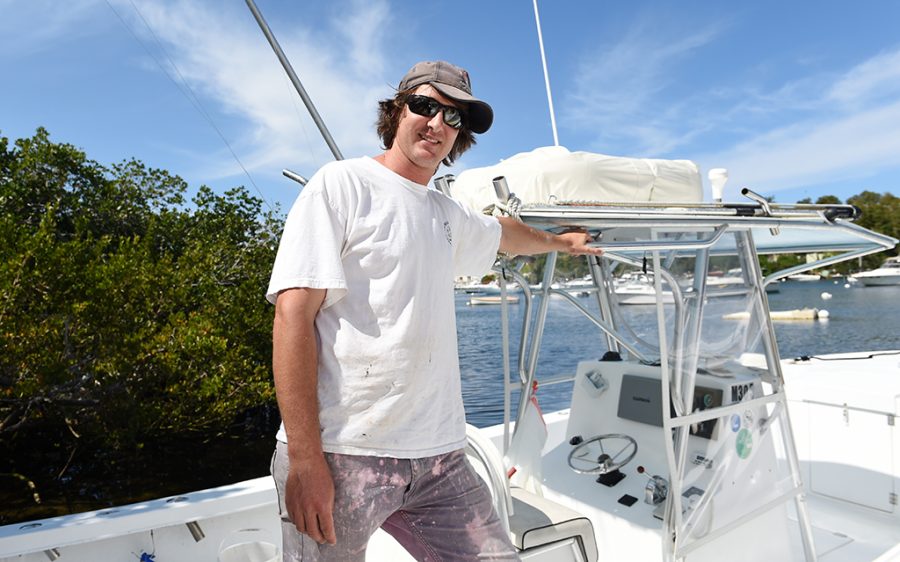by Captain Matthew Jones Sanctuary Marine
My alarm goes off at 5am. I get up feeling like I have been beaten all over with a stick. Almost overcome by grogginess, I somehow get dressed and go up to the fridge to put together some lunch. I am driven by a youthful excitement knowing that every day will be somehow different and yet somehow the same.
It is July 1999, I am 12 years old and I have my first “job” on a charter fishing boat. I call it a “job” because I worked 29 days a month for three months and was paid a whopping $200 for my labours, but I would have been happy if I hadn’t received a dime. I just wanted to fish.
I loved the ocean. You never knew what you would see or catch out there and even though I would get seasick almost every morning, I did not mind. I just wanted to learn. The days were fairly monotonous. Show up at the dock before 6:30am, load bait and drinks, clean up the boat to make it tidy for our daily charter guests whom we would typically pick up at 7am at Albuoy’s Point in Hamilton.
Then we would pull out the big rods for our daily marlin troll to one of the two southwestern seamounts, Challenger Bank, 12 miles offshore, or Argus Bank, 21 miles out. These underwater mountains drop off into the abyss like a sheer cliff plunging as much as 10,000 feet deep. Our preferred position would be on the side of the mountain being hit by the prevailing ocean current.

We would wind in the marlin lures, anchor up in about 250 feet of water and start chumming. Every day we would catch an average of ten 40lb-60lb yellowfin tuna, plus some wahoo, almaco jacks (locally known as bonitas), amberjack and other bottom-fish, making for an action-packed day. Often the chum line off the back of the boat would look like an aquarium, with fish gorging themselves on the free buffet.
You could almost pick the fish you wanted to catch by timing when you threw out your line. I remember our anchor got stuck on Argus Bank, so we tied some floats to it and left it there. For six weeks we returned and consistently caught ten or more yellowfin tuna a day in the same spot from July into August of 1999. Once our time was up we would pull the anchor, throw out the marlin lures and every other trip we would catch a blue or white marlin.
Once back we would drop off the charter guests, return to the dock to clean the fish and the boat and do it all again the following day. Almost all the fish was sold to grocery stores and restaurants for $6.50 a pound — a price that remains much the same to this day. They never had trouble selling it.
With tears rolling down my face, I can say with confidence those days are over. I promise you, nobody loves yellowfin tuna like I do. Fishermen can be painted as ruthless killers, but the truth is we love the fish because without them we cannot survive. I would argue we know more about the fish than even marine biologists. It is one thing to know the scientific name and anatomy of a fish, it is another to learn their habits and behaviour so well that you can make a living from killing the ocean’s top predators.
Mastering the art of fishing is the fulfilment of what it means to be human which is why people love fishing so much. It is the last industry where we can still fully actualise our potential as the top predator on Earth. The old captain I fished with when I was 12 would say that in Bermuda we have seven years of good tuna fishing and seven years of bad. These days it is seven years of bad tuna fishing, a month or two of good, followed by another seven years of bad. I have not seen a good summertime yellowfin season in more than 15 years.
In the past couple of seasons we did have some decent yellowfin tuna fishing, but in the wrong months. These days they have been showing up for a couple of weeks in June, then again in October to January. The average size of the fish has dropped from 40lb to 60lb down to 15lb to 30lb. The tuna used to be consistent, almost like the seasons. You knew what to fish for simply by knowing what the date was. If it were June to August you could go out, determine the direction of the ocean current, anchor up or drift on the right side of the seamount and catch ten to 20 tuna per day. In September to November it was time to switch to trolling rigged ballyhoo or live bait trolling frigate mackerel (little tunny if you are not from the Rock) for wahoo.
In the winter months it was a bit harder to fish for the pelagics (wahoo and tuna) but in November and December you could go bottom-fishing on Challenger Bank and catch 600lb of fish per day. In January and February you could go to Argus Bank and do the same thing. March was a bit of a slow month, with the humpback whale migration moving through the fishing grounds. Come April you could once again go trolling for wahoo and even catch some early-season tuna and by June it was tuna time again. Making $1,000-plus per trip was fairly easy.
Those days are over, because that schedule no longer applies. People might think that the fish-pots are to blame, but pelagic species were never caught in a fish-pot. The local pelagic fishery was never commercially exploited, we never used long lines or purse-seine nets. Using hook and line, rod and reel, it was nearly impossible for us to ever catch more fish than the ocean could replenish.
The destruction of our local yellowfin tuna fishery is due to the proliferation of human beings, which leads to the proliferation of global commercial fishing, plastic pollution in the ocean and global warming. Small 10lb yellowfin tuna are being netted by the ton off the west coast of Africa. They are being killed before they have a chance to reproduce by people who cannot really be blamed for what they are doing. Post-colonial Africa has it much rougher than we do in the developed world and without those small tuna, people would starve.
At this rate of consumption the global pelagic fishery may have as little as 20 to 50 years before total collapse. The influence of global warming and microplastics could be even more detrimental than excessive fishing. If the ocean currents alter course we will see a global extinction event that would rival a large meteor striking the Earth.
In the Anthropocene age, our capacity to grow meat in a laboratory will determine who eats and who starves. We may think we are somehow separate from nature, but as the law of ecology states, everything is interconnected and we are part of nature.
The sooner we remember this and start accounting for the cost of losing the global fishery, the better. The fact that we are living on borrowed time and must change our ways soon will become truly apparent.
The solution is simple: stop having so many children and stop using fossil fuels and petroleum products entirely. We must remember that without the tuna we cannot survive, we are a part of nature and should act as the Earth’s stewards. Without a fresh piece of tuna, clean air and clean water, all the money in the world is useless.
It is hard to see the destruction of the ocean and put a price on the loss of the global pelagic fishery from an office building in Hamilton, but from where I have been standing it is plainly obvious. Nobody lives for ever and trying to keep up with the Joneses is no excuse for destroying the world. Just because everyone else lives a certain way does not mean you must do the same.
Bermuda could be a shining light, a utopian example of what the world needs to become for us to survive. But instead we continue to import plastic by the ton and burn oil to power an island that has more than enough wind and tidal power at our fingertips. Some say changing our ways would cost too much money, but what will be the cost of not changing our ways? Thinking “I will be dead by then” is no excuse. And to be frank, you might still be alive to see it at our current rate of consumption.
This article was originally published in the 2019 edition of the rg Food Magazine.

